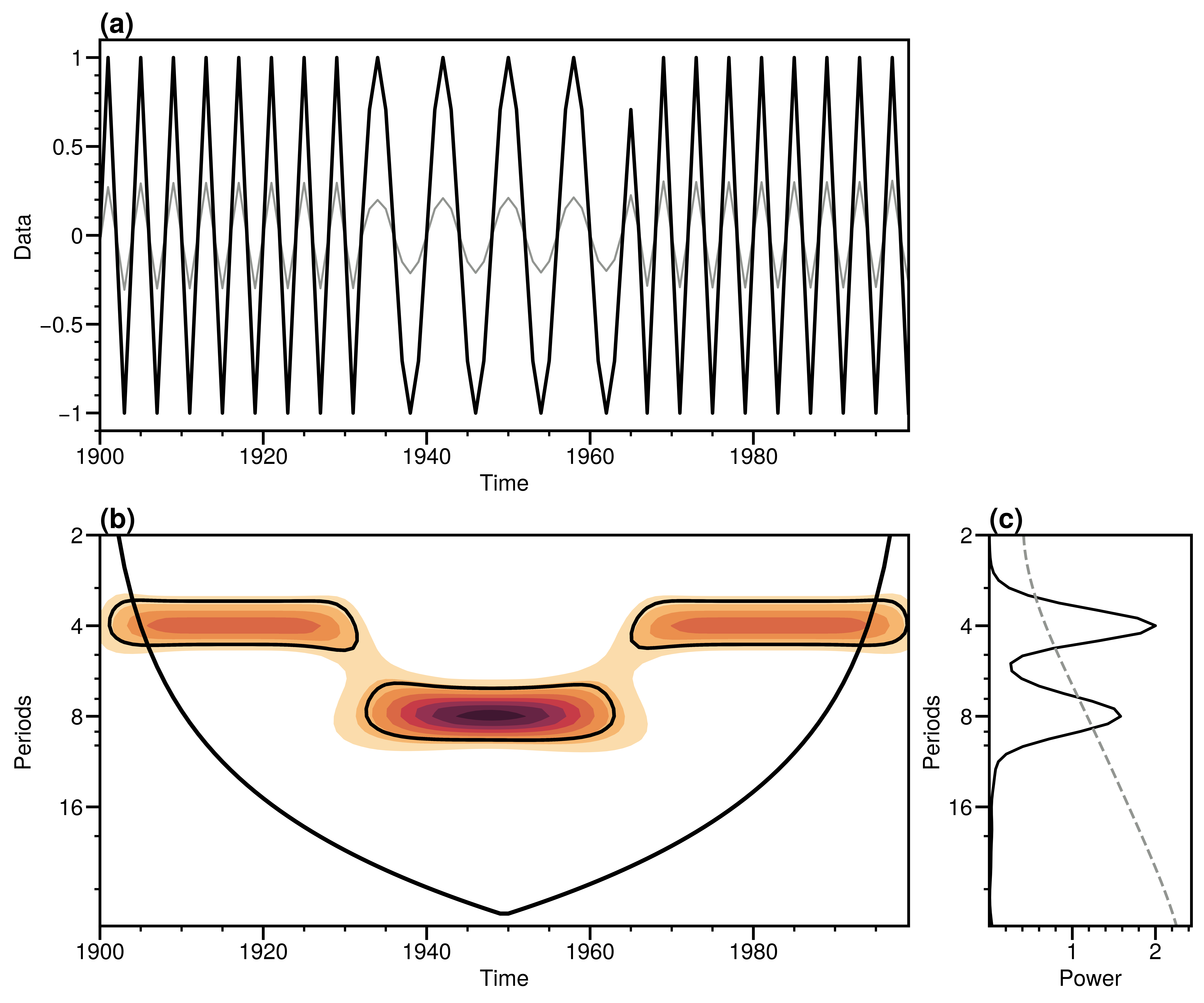1
2
3
4
5
6
7
8
9
10
11
12
13
14
15
16
17
18
19
20
21
22
23
24
25
26
27
28
29
30
31
32
| def Wave_Analysis_Plot(dat, t, dt):
import proplot as pplt
res_wt = WaveTrans(dat, dt)
iwave = res_wt['iwave']
periods = res_wt['periods']
power = res_wt['power']
sig95 = res_wt['sig95']
coi = res_wt['coi']
glbl_power = res_wt['glbl_power']
glbl_sig95 = res_wt['glbl_sig95']
fig, axes = pplt.subplots([[1, 1, 1, 1, 0],
[2, 2, 2, 2, 3]], figsize=(12, 10))
axes[0].plot(t, iwave, c='grey', lw=1.5)
axes[0].plot(t, dat, c='k', lw=2.5)
axes[1].contourf(t, periods, power)
axes[1].contour(t, periods, sig95, colors='k', vmin=1, vmax=1)
axes[1].plot(t, coi, c='k', lw=3)
axes[2].plot(glbl_power, periods, c='k', lw=2)
axes[2].plot(glbl_sig95, periods, c='grey', ls='--', lw=2)
axes[0].format(ylabel='Data')
axes[2].format(xlabel='Power')
axes[0:2].format(xlabel='Time')
axes[1:3].format(ylabel='Periods', yscale='log',
yticks=2**np.arange(1, int(np.log2(coi.max()))),
ylim=(coi.max()*1.1, periods[0]))
pplt.show()
return res_wt
|
